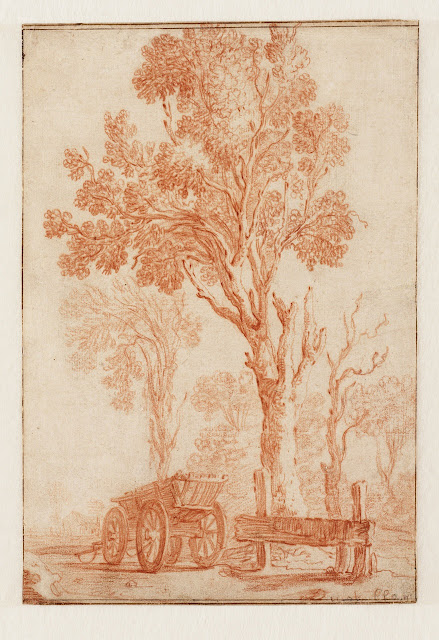| Johannes Lingelbach Mediterranean harbour scene 1669 oil on canvas Städelsches Kunstinstitut und Städtische Galerie, Frankfurt |
 |
| Johannes Lingelbach Italian seaport with classical ruins and statue of Neptune 1670 oil on canvas Dulwich Picture Gallery, London |
 |
| Johannes Lingelbach Harbour scene with classical statue of Mercury 1667 oil on canvas John and Mable Ringling Museum of Art, Sarasota, Florida |
"According to Houbraken, Johannes Lingelbach left Amsterdam and went to France in 1642, and it was another two years before he went to Rome, 'where he practised his art with dedication and industry until the year 1650, when on the 8th of May, on Sunday, he left Rome on his journey home through Germany, and in June arrived back in Amsterdam in good health'. . . . There are signed and dated paintings by Lingelbach from almost every year after his return. In the backgrounds to these works he frequently used compositions or motifs from Rome and other places in Italy, which he will have taken from his own drawings . . . subjects he used include the Piazza Navona, the Piazza del Popolo and the Piazza Colonna in Rome, and places in Genoa and Livorno. . . . Aside from the drawings referred to above, and a few figure and animal studies, Lingelbach almost exclusively drew Mediterranean harbour views with oriental merchants and porters, who load, unload or rest."
 |
| Johannes Lingelbach Port scene before 1674 oil on canvas, mounted on panel Fitzwilliam Museum, Cambridge |
 |
| Johannes Lingelbach Italian harbour with fortified tower ca. 1650-74 oil on canvas Rijksmuseum, Amsterdam |
 |
| Johannes Lingelbach Italian harbour with fortified tower 1664 oil on canvas Rijksmuseum, Amsterdam |
 |
| Johannes Lingelbach Harbour scene with statue of Neptune 1668 oil on panel Wadsworth Atheneum, Hartford, Connecticut |
 |
| Johannes Lingelbach Study for harbour scene ca. 1670 drawing British Museum |
 |
| Johannes Lingelbach Figures at quayside before 1674 drawing- Metropolitan Museum of Art, New York |
 |
| Johannes Lingelbach Harbour with classical buildings and statue of Neptune ca. 1660-74 drawing Rijksmuseum, Amsterdam |
 |
| Johannes Lingelbach Eastern seaport with classical architecture 1644-74 drawing Teylers Museum, Haarlem |
 |
| Johannes Lingelbach Eastern seaport 1644-74 drawing Teylers Museum, Haarlem |
 |
| Johannes Lingelbach Mediterranean port scene before 1674 drawing Fitzwilliam Museum, Cambridge |
 |
| Johannes Lingelbach Italian seaport ca. 1670 drawing British Museum |
 |
| Johannes Lingelbach Italian or Levantine seaport before 1674 drawing with watercolor British Museum |
"The harbour and coastal views [Lingelbach] drew are all virtually identical in composition and character. Groups of standing and seated figures are placed quite prominently in the picture plane against a background of ships and buildings on the waterfront. The foreground is given dark accents with a brush, the figures in the middle distance are in sun or in shade, and the background is, as usual, lighter in tone. Three drawings with a signature in italics have been worked out in watercolour [as above], but whether this was done by Lingelbach himself is questionable. . . . 'Improving' and working up old drawings was a fairly common practice in the 18th century, and the three drawings by Lingelbach that have been 'finished' in watercolour probably suffered this fate."
– Peter Schatborn, from the catalogue of a 2001 exhibition at the Rijksmuseum, published in English as Drawn to Warmth: 17th-century Dutch artists in Italy, translated by Lynne Richards










































